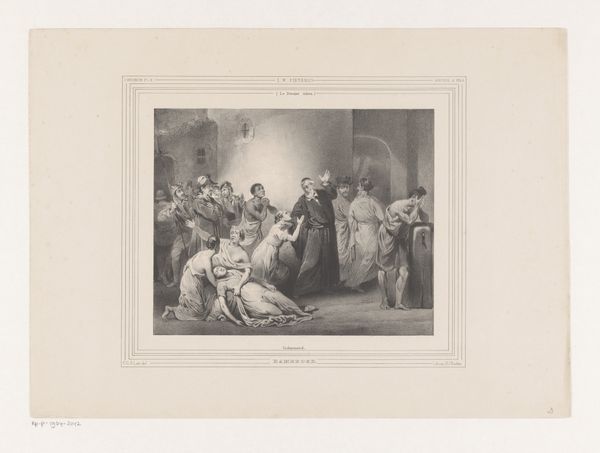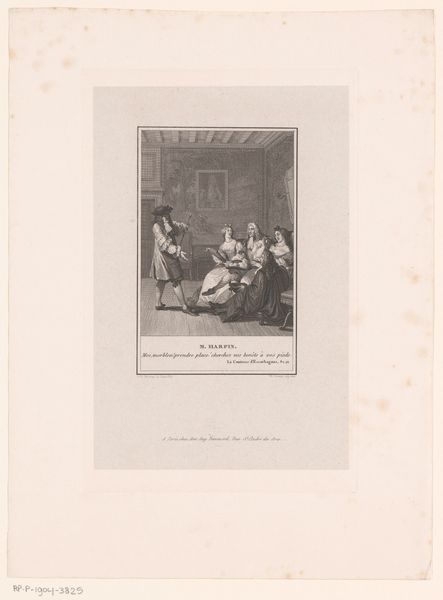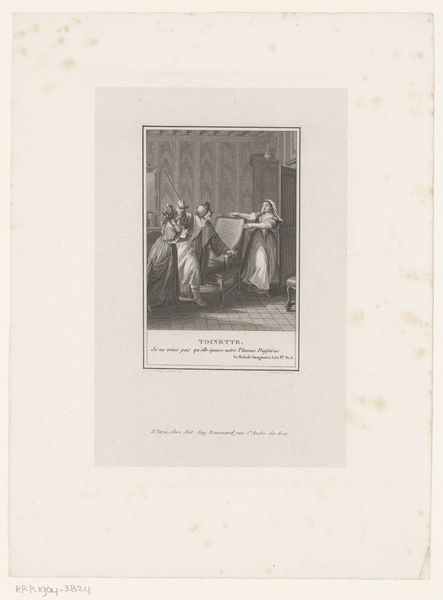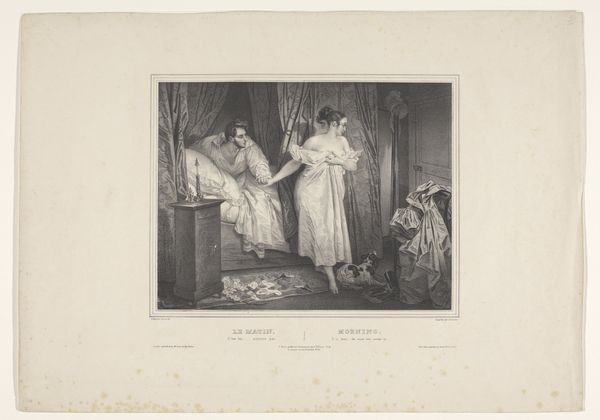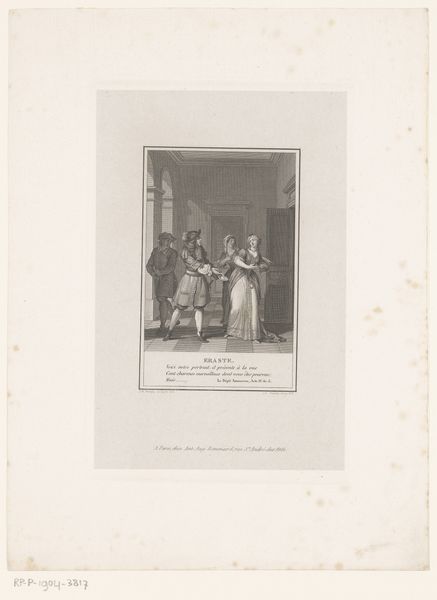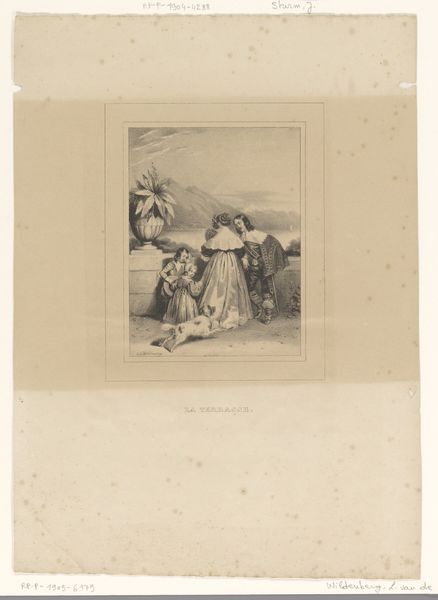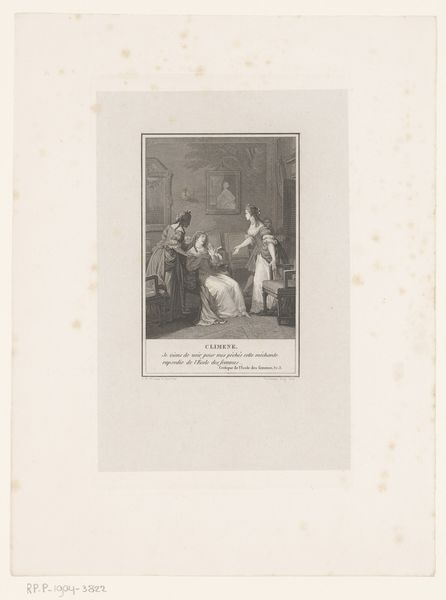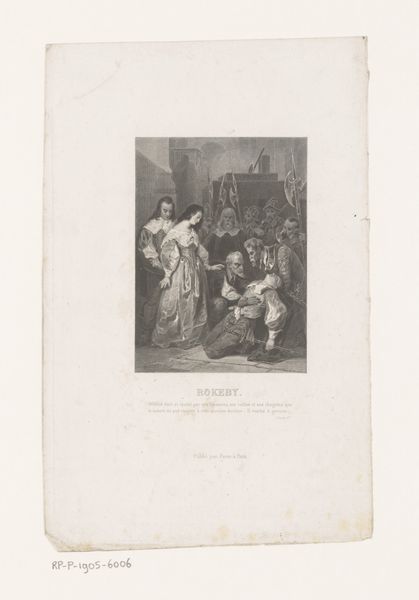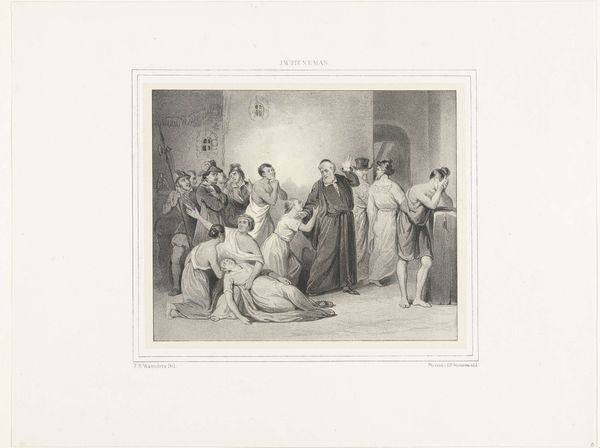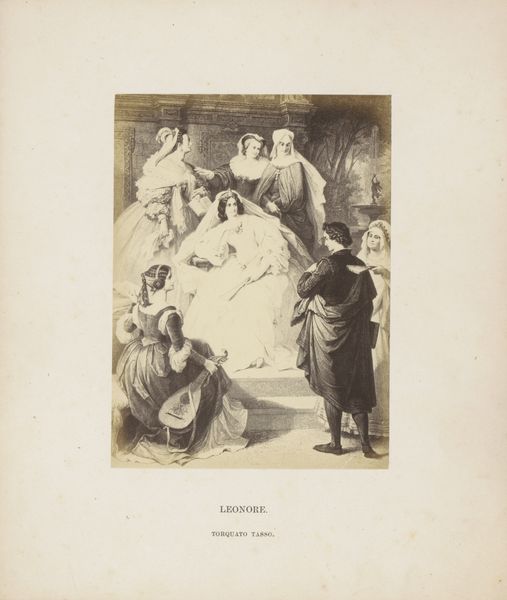
print, engraving
# print
#
figuration
#
history-painting
#
academic-art
#
engraving
Dimensions: height 597 mm, width 442 mm
Copyright: Rijks Museum: Open Domain
Curator: Welcome. This print, titled "Voorstellingen van het oordeel van Salomon en de nieuwe Pausias," created in the 1850s by Carl Federle, presents two distinct narratives, both rendered through engraving. What are your first impressions? Editor: Stark contrasts dominate. The upper scene feels violent, driven by strong diagonal lines, while the lower one is composed of softer curves. Both suggest formality. Curator: Indeed. In the upper panel, we witness the Judgement of Solomon. It’s an allegorical scene where the King's wisdom is tested; he proposes dividing a baby between two mothers to reveal the true parent. Notice the emotional tension Federle captures with the impending act. Editor: It’s potent, the figures arrayed symmetrically, almost like actors frozen in a play. The image as a whole has a strong semiotic value. The sword is a signifier of the implied violence and, potentially, royal power. It all culminates in the King at the back, who is slightly offset on his throne as the composition draws to that top-back. Curator: Precisely. Now, consider the lower panel. The inscription refers to 'the new Pausias,' suggesting a revival of classical ideals. We see a laurel being placed on the head of an idealized figure. Editor: The scene here presents us with themes of victory and recognition. Pausias was known as an encaustic painter, suggesting there could be an acknowledgement to those artists and thinkers who followed classical methods. This section has its semiotic values also: the clothing styles harken back to Greek aesthetics. Curator: A plausible reading! This choice reinforces the broader academic art movement of the time, an era fascinated by historical representation and moral themes. Federle's attention to form and proportion shows a commitment to traditional aesthetic principles. The stark contrasts afforded by the engraving also further create sharp emotional values, separating the moral implications for the two different subjects of Judgement and Praise. Editor: This coupling generates complex contrasts and speaks to shifting notions of how we evaluate justice, praise, and the echoes of historical memory. Curator: Very well observed. Through the structured formality of engraving, Carl Federle presents us with moral allegory and aesthetic tribute, compelling us to ponder how historical narratives reflect timeless human ideals. Editor: It really is something that the print becomes an act of aesthetic preservation. It brings past forms forward into the present moment.
Comments
No comments
Be the first to comment and join the conversation on the ultimate creative platform.
